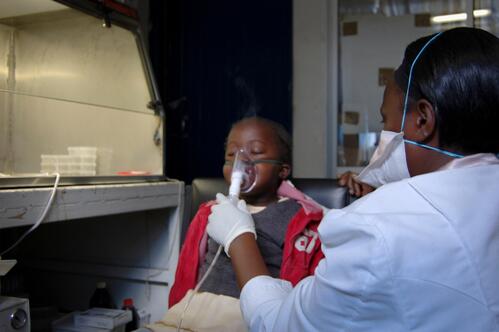This report outlines the current state of paediatric TB care, looking at current practices, new developments and research needs – in paediatric TB diagnosis, treatment and prevention. It intends to act as a guide to treatment programmes for implementation of the best standard of care currently available to children with TB, and to raise awareness of the need to continue to push for improvements in the management of childhood TB.
Introduction
Though curable, tuberculosis (TB) kills at least 130,000 children each year, making it one of the top ten causes of death in children. There are also rising numbers of children who are infected with drug-resistant forms of TB which require complex treatment.
Paediatric TB is a neglected disease. Insufficient research and development attention has led to a lack of diagnostic methods adapted for children’s needs and a lack of appropriate drug formulations for children. This, in turn, has contributed to a situation in which TB programmes often under-diagnose, under-treat, or omit altogether children with TB.
Despite the difficulties in diagnosing and treating children with TB, children can be cured, and it is imperative to make the best use of the tools that are available today to ensure that children with TB do not remain in the dark. This report will outline the current state of paediatric TB care, looking at current practices, new developments and research needs – in paediatric TB diagnosis, treatment and prevention. It intends to act as a support to treatment programmes for implementation of the best standard of care currently available to children with TB, and to raise awareness of the need to continue to push for improvements in the management of childhood TB.
Paediatric TB treatment has also been neglected as a strategic priority. Until recently, the World Health Organization’s (WHO) Global Tuberculosis Control strategy has focused on identifying and managing the most infective causes of TB (primarily smear-positive pulmonary TB). However, children with TB, especially those under ten years of age, tend to have a form of the disease that is difficult to diagnose, as it reveals very few bacteria in the lungs (paucibacillary smearnegative disease). Because paediatric TB is an indicator for the current control of TB in the general population, and also acts as a future reservoir for TB disease, any successful TB control programme should include a paediatric focus.
Children with TB differ from adults in their disease progression in ways that have important implications for the prevention, diagnosis and treatment of TB. Young age, and co-morbidities such as malnutrition and HIV, all further worsen the mortality and morbidity in children with TB. However, when started promptly, the outcome of TB treatment in children is generally good, even in those that are young and immuno-compromised. Some studies suggest that compared to adults, children appear to experience fewer adverse events associated with use of the recommended treatment regimens.
While critical gaps in research and development for paediatric TB remain and must be filled, there is much that can be done today to reduce the number of children dying from the disease each year.




